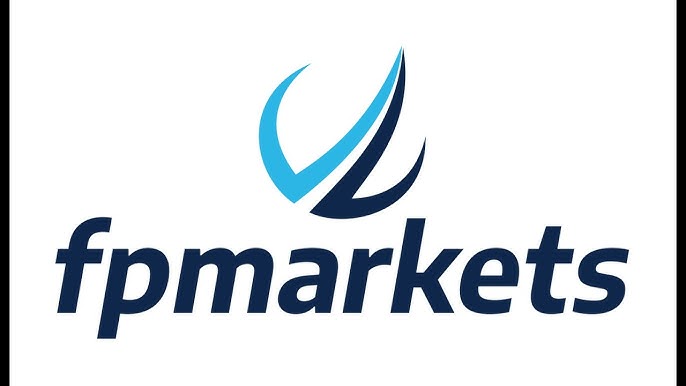Table of content
Synthetic indices are a unique type of financial instruments that can be traded in the form of CFDs, providing higher leverage and flexible speculation capabilities for traders. They are generated using a computer algorithm and simulate a real trading environment with controlled volatility and no risks of sudden market shocks. Since the broker that offers synthetic indices must be reliable to avoid fraud and scams, we have decided to list the most reliable platforms for speculating on these instruments.
Understanding Synthetic Indices
Synthetic indices are different types of trading asset classes that were created by algorithmic means by simulating various market conditions and behaviors. Differently from traditional financial indices which were derived from the prices of real-world assets including stocks, bonds, or commodities, synthetic indices are created using random number generators to mimic the movements and volatility of these markets.
Here is the list of unique characteristics of synthetic indices:
- Market independence — synthetic indices are not influenced by real-world events such as economic news, geopolitical events, or natural disasters. This makes them less susceptible to unpredictable market shocks.
- 24/7 trading — synthetic indices markets are not restricted by traditional market trading hours and can be open 24/7, providing continuous trading opportunities.
- Controlled risk and volatility — the algorithms that generate synthetic indices also control their volatility, reducing risk exposure for traders.
- Reproducibility — The outcomes are transparent and can be replicated with synthetic indices as they are generated using fixed algorithms, ensuring a level of fairness in trading.
Financial traders frequently use synthetic indices to speculate, hedge, or diversify their portfolios, allowing them to benefit from their unique attributes while being mindful of the nature and risks inherent in any form of trading.
The Role of Forex Brokers in Synthetic Indices Trading
Offering trading platforms to access financial markets, Forex brokers are crucial middlemen between the trader and markets. In the case of synthetic indices, the reliability and safety of the broker becomes even more important.
Forex brokers provide traders access to synthetic indices that are not available on traditional exchanges, and brokers offer platforms where they can be traded. Brokers also provide tools necessary for trading, including sophisticated charting software, technical indicators, and automated trading options.
Another significant role of brokers is the leverage and margin trading possibilities. They enable traders to access leverage and control trading positions several times their account balance, amplifying potential profits in the process. Needless to say, leverage is a double-edged sword and traders must approach it with caution. Since synthetic indices are algorithmically generated, brokers are responsible for ensuring the integrity and continuity of their price feeds. Forex brokers with synthetic indices in their instruments list must ensure these indices reflect the simulated market conditions they are designed to replicate.
They also provide support and educational resources for beginners, enabling almost anyone to learn the basics of financial trading.
Top Forex Brokers Offering Synthetic Indices
Below is the list of the most reliable Forex and CFDs brokers that offer synthetic indices for low spreads and considerable leverage levels.
Pepperstone

Pepperstone is a regulated Forex and CFDs broker that offers volatility synthetic indices for trading. The broker is reliable and has average spreads from 0.16 on the VIX or volatility index.
| Standard | |
|---|---|
| CBOE Volatility Index (VIX) | From 0.16 |
| Maximum leverage for indices | – |
| Typical spreads on EURUSD | From 1 pip |
| Minimum deposit | 0 USD |
Tickmill

Tickmill is a regulated Forex and CFDs broker that offers synthetic indices among a multitude of other assets. The spreads on the CBOE Volatility Index (VIX) start from 0.22 making it a competitive broker for synthetic indices trading.
| Standard | |
|---|---|
| Typical spreads on the CBOE Volatility Index (VIX) | From 0.22 |
| Maximum leverage for indices | 1:100 |
| Typical spreads on EURUSD | From 1.6 pips |
| Minimum deposit | 100 USD |
HFM

HFM is a regulated Forex broker that is available globally. It offers synthetic indices, including the Volatility index (VIX. F) with a spread from 0.12.
| Standard | |
|---|---|
| Typical spread on Volatility Index SP 500(VIX.F) | From 0.12 |
| Maximum leverage for indices | 1:100 |
| Typical spreads on EURUSD | 5 USD |
| Minimum deposit | From 1.3 pips |
XM

XM is a global Forex broker that is one of the most popular and robust companies. It offers low minimum deposits from 5 USD and spreads are super competitive from 0.6 pips to EURUSD. Traders can speculate on the CBOE Volatility Index (VIX on XM MT4 and MT5 platforms for 0.07 spreads, which is one of the lowest in the industry.
| Standard | |
|---|---|
| CBOE Volatility Index (VIX) | From 0.07 |
| Maximum leverage for indices | 1:500 |
| Typical spreads on EURUSD | From 0.6 pips |
| Minimum deposit | 5 USD |
FP Markets

FP Markets is a popular Forex and CFDs broker offering synthetic indices among its trading assets. The spread on the VIX Index Cash index (VIX) is around 0.15 offering competitive conditions for FX traders.
| Standard | |
|---|---|
| Typical spread on VIX Index Cash vs US Dollar Future (VIX) | From 0.15 |
| Maximum leverage for indices | – |
| Typical spreads on EURUSD | From 1 pip |
| Minimum deposit | 100 AUD or equivalent |
How to Choose the Right Broker for Synthetic Indices
There are several key aspects for choosing the right Forex broker for synthetic indices trading:
- Safety and regulations — This is critical as scammers might manipulate prices
- Trading platforms and trading costs — advanced trading platforms with technical indicators are a must for synthetic trading, lower spreads and costs ensure traders can make profits.
- Leverage and margin — Leverage trading allows traders to control substantially higher trading positions than their account balance and is key for making a living with a small account
- Risk management tools — without stop loss, trailing stop, and take profit trading is gambling.
- Customer support and education — education about synthetic indices can help novice traders learn about important concepts, and support is key for ensuring client satisfaction. Good support is needed when trading financial markets
- Execution speeds and reliability — It is important to open position at desired prices, and high execution speeds ensure the order open price is closer to the desired price
- Access to a free Demo account — without a free demo account, traders will have to operate a live account to test indices trading and broker’s trading conditions. So, a free demo account is always a must for any Forex broker.
The first step is to list reliable brokers that offer synthetic indices and then choose the most suited one with low fees, and low spreads. Depending on the variety of indices instruments, traders might select a broker that offers preferred instruments or just opt for ones with the highest number of tradable synthetic indices.
Strategies for Trading Synthetic Indices
Synthetic indices are unique instruments as they are not affected by real-world economic events, enabling technical traders to solely rely on technical methods. There are several popular methods to start trading synthetic indices, but comprehensive backtesting is required to make any positive results. Since synthetic indices are simulated markets that are designed to mimic the behavior of real financial markets, there are several approaches to be considered:
Technical analysis approach
Synthetic analysis is not influenced by real-world events, and traders can heavily rely on technical analysis. Since many traders use only technical analysis, synthetic indices could offer a great opportunity to speculate and make money.
Trend following
Identifying and following the trend without worrying about upcoming fundamental news could offer a comfortable point for technical traders. Trend follower traders look for consistent upward or downward movements and make trades in the direction of the established trend.
Mean reversion
Mean reversion is based on the assumption that prices will eventually move back towards the mean or average. Traders look for setups in which prices have deviated significantly from a historical average, and trade on the expectation of a return to the average.
Scalping
Making a very short-period position can help traders make quick gains if the trading strategy employed is a well-tested and profitable one. This strategy requires quick decision-making and is more suited to experienced traders who have strong discipline and self-control to execute trading strategies flawlessly.
No matter what approach traders take, it is necessary to test the strategy beforehand and only then deploy it in live markets. Backtesting is critical for ensuring the strategy has positive returns on historic price action.
FAQs on Forex brokers that offer synthetic indices
Which brokers allow synthetic indices?
Which site is best for trading synthetic indices?




